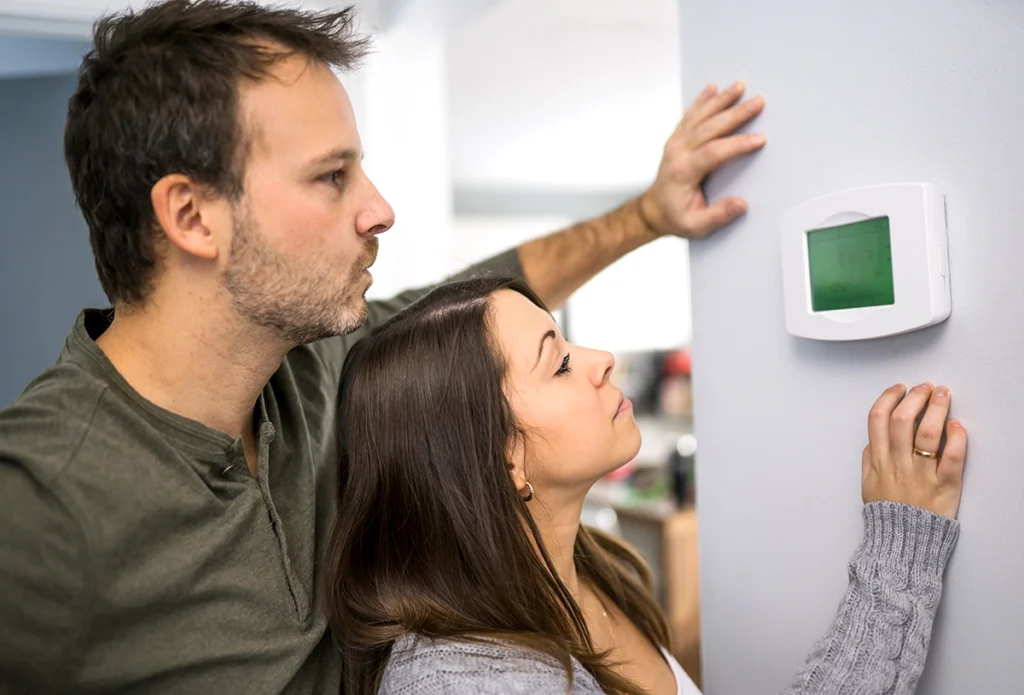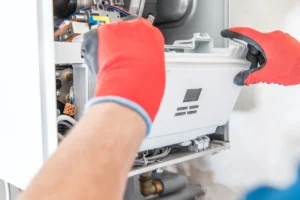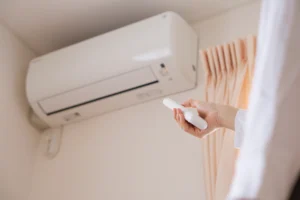If you’ve ever stared at your thermostat wondering how to switch from AC to heat, you’re not alone. Every fall, we get calls from homeowners who aren’t sure if their system’s working—or if the settings just need a quick adjustment. As someone who’s spent years at Sub Zero Temp Control, I can tell you this: switching from AC to heat isn’t complicated once you know what each mode actually does.
Below, I’ll walk you through the process step by step, share what to watch for, and explain how to make the transition smooth and efficient.
Understanding the AC to Heat Transition
When you switch from AC to heat, your thermostat tells the HVAC system to change modes. If you have a traditional setup (air conditioner + furnace), that means your cooling unit shuts down and your furnace takes over to warm the air before sending it through your ducts.
If your home uses a heat pump, it’s a little different. Instead of firing up a separate heating system, the heat pump simply reverses its cycle to pull warmth from outside air and bring it indoors. Either way, the comfort goal’s the same—warm, even airflow throughout your home.
(I can’t tell you how many times I’ve seen homeowners think their furnace failed, only to find the thermostat still set to “cool.” Happens every year.)
For a quick overview of how various heating systems operate, check out the U.S. Department of Energy’s Home Heating Systems guide. It’s a solid reference covering furnaces, boilers, and heat pumps alike.
Step 1: Switching Your Thermostat from AC to Heat
The first step is the simplest—verify your thermostat is set correctly. Switch the mode from “Cool” to “Heat” or “Auto.” Then, adjust the temperature a few degrees above room temperature. You should hear the system click and the blower start within a minute or two.
If nothing happens, don’t assume the worst just yet. Check the fan setting—it should be on “Auto,” not “On.” The “On” setting can make it seem like the system’s running even when it isn’t heating.
Step 2: Wait and Listen for the Warm Air
After setting your thermostat, give your system a moment. Transitioning from AC to heat sometimes takes a few minutes as the furnace or heat pump cycles up.
Walk to a supply vent and feel the air. If it’s warm after a couple of minutes, you’re in good shape. If not, it might be a filter, airflow, or ignition issue.
For a quick airflow check, remove your filter and hold it to the light. If you can’t see through it, it’s time for a replacement.
Step 3: Outdoor Unit Prep Before Switching from AC to Heat
Even if your outdoor unit won’t be doing much heating work—especially if you have a furnace—it’s smart to make sure it’s clear of debris, leaves, or dust before winter. Good airflow around the condenser helps protect the components and ensures smooth operation when you switch back to cooling later in the year.
If you do have a heat pump, keep the area clear of snow and ice to prevent performance issues.
Step 4: Don’t Forget About Maintenance
Switching from AC to heat seasonally is the perfect reminder to schedule your HVAC maintenance. During a tune-up, your technician will check your system’s components, clean coils, tighten electrical connections, and test safety controls. These small steps make a big difference in performance, efficiency, and longevity.
At Sub Zero Temp Control, we perform full-system inspections that prepare your home for the heating season and catch issues before they lead to costly repairs. It’s a simple way to keep your comfort consistent all year long.
For a checklist of what professional maintenance should include, take a look at the ENERGY STAR HVAC Maintenance Checklist—it’s a great resource for homeowners who want to understand the process.
Step 5: Know When to Call for Help
If your system doesn’t respond, blows cool air, or shuts off unexpectedly, don’t wait for the temperature to drop further. You can also read our guide on why your heater might be blowing cold air for quick troubleshooting before scheduling a service call.
(And if you’re not sure whether you have a furnace, boiler, or heat pump, don’t worry—we can help you figure it out. You’d be surprised how often people aren’t sure what’s in their home.)
Common Questions About Switching from AC to Heat
Homeowners often ask a few of the same questions when switching from AC to heat. Here are quick answers to the most common ones:
Set your thermostat mode to “Heat,” then raise the temperature above the current room temp. Wait a few minutes for warm air.
No, as long as you give it time between mode changes. Rapid switching can cause short cycling.
Check filters and thermostat settings. If it still doesn’t warm up, schedule a service visit with Sub Zero Temp Control.How Do I Switch My Thermostat from AC to Heat?
Can Switching from AC to Heat Damage My System?
What Should I Do If My System Doesn’t Heat After Switching?
Staying Comfortable All Season
Switching from AC to heat doesn’t have to be confusing. Once you understand how your system responds and what to look for, you’ll feel confident every season change. And if your home’s comfort doesn’t keep up with the temperature outside, Sub Zero Temp Control is here to help.
We provide maintenance, troubleshooting, and full HVAC solutions to keep your home running efficiently. Whether it’s a heat pump tune-up or thermostat calibration, we’ve got you covered.
Contact Sub Zero Temp Control today to schedule your seasonal maintenance or system check. We proudly serve Vancouver, WA, and beyond.






